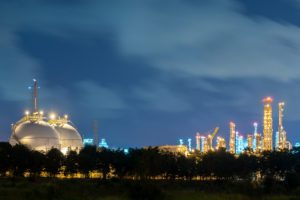Energy prices are escalating, dependency is increasing and energy sources are becoming scarcer. The same phenomenon is occurring with electricity, natural gas, propane, steam and all other energy sources for the buildings that we live, work and play in.
When considering the energy balance of a building, one must consider the energy put into the building: what is lost and what is used. Typically, equipment efficiency can be improved to limit the use or consumption of energy. The facility itself can be improved and controls utilized to limit the loss of energy and conserve electricity. Reducing use of energy as well as its loss can significantly impact the cost of energy required to run a facility.
To a CFO, any reduction in operating expenses can be added to the budget to fund strategic initiatives and create growth for the company. To any other C-level executive, these budget dollars can be used to improve business performance – and that is the bottom line.
One story serves as a good example of the potential benefits of managing a building’s energy balance. In the extremely competitive environment of luxury resorts, the Westin Macau in China must create a superior guest experience while aggressively monitoring gross operating profit (GOP). The key metric for this upscale hotel is occupancy and the facility’s chief engineer closely monitors the energy use of unoccupied areas.
Even with the impact of dramatic weather fluctuations and the resort’s focus on a very high level of guest comfort, an energy management system has delivered between the equivalent of US$200,000 and US$250,000 in energy savings annually since its installation in 1995. Monitoring, control and management of the Westin Macau’s energy use and loss have added to the resort’s GOP in dollar amounts the Westin’s CFO can see. The measures have also increased the ease of operating the resort for the staff, which in turn has led to a decrease in the number of guest complaints and an increase in guest comfort.
Everyone wins!


Conversation
Great article, Brandy. Can you tell us which SE energy management systems are in place to help achieve these great results in Macau?
Hi Jaclyn. Thanks! At the hotel it is a TAC Building Management System and variable speed drives. The project was managed from the buildings office in Hong Kong.
Great. Thanks for the reply, Brandy!
$250,000 is a huge saving in energy, which is great for, not least the environment, but I wonder how much extra (if any) was the cost to achieve this? Superior guest experience always comes first, but is there a ‘fine line’ that cannot be crossed before costs increase? Great article Brandi, thanks for the knowledge. Andy
Hi Andy, there was an initial investment in this property to install a building management system and upgrade some equipment. Of course superior guest experience was the #1 concern! To read the full story, have a look here https://www2.schneider-electric.com/documents/solutions/success_story/138-the-westin-resort.pdf